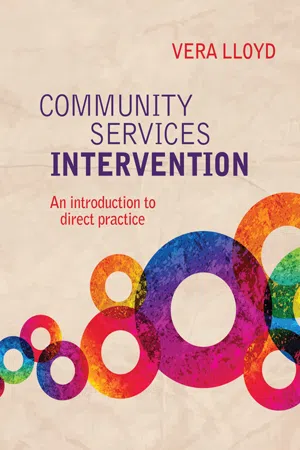aimed at helping individuals on a one-to-one basis to resolve personal and social problems … geared to helping clients adjust to their environment or to changing certain social or economic pressures that are adversely affecting them.
Much casework knowledge and skills originates from individualising human beings in the poverty situation, and from the study of the global relief and charity organisations of the sixteenth and seventeenth centuries. Social casework is one of the oldest professional forms of community services practice. Its form and focus have changed over time, and continue to do so in response to the environment, but its fundamental and traditional basis remains the same.
In 1937, Gordon Hamilton wrote: ‘When we think of fundamental concepts we are inclined to imagine a static practice. The truth is that casework concepts are dynamic. They change, grow and develop as they are shaped by new experience and knowledge.’ (Roberts & Nee, 1970: 35). Despite being written over 75 years ago, Hamilton’s statement remains true in practice today.
The work of Mary Ellen Richmond (1917) provides valuable insight into how charity evolved into social casework. She defines social casework as the art of doing different things for and with different people by cooperating with them to achieve simultaneously their own and society’s betterment. Richmond’s model for social casework concerns those processes that develop personality through adjustments consciously effected, individually, between people and their social environment. According to this definition, casework is recognisable by its aim of social betterment and its method of differential treatment.
According to Richmond, social casework includes using a person-in-environment or care-centred approach. These address all the systems that affect an individual and their functioning. This type of casework allows the practitioner and the client to try to find a resolution to the client’s problems by establishing which system is causing the issues (Hiersteiner & Peterson, 1999). Such systems might include family, community, work, education, health, social policies, legislation and justice services.
The approach assumes that an individual’s life difficulty should also be addressed by determining the social and political factors that may be contributing to the problem, and thus causing the client’s dysfunction.
A further definition provided by Bowers (1949) refers to social casework as an art in which knowledge of the science of human relations and skills in relationships is used to mobilise capacities in the individual and resources in the community that are appropriate for better adjustment between the client and all, or any part, of their total environment.
We can add the views of Brown (1977), who further defines social casework as a helping activity that is made up of a very large number of constituent activities, ranging from the giving of material assistance, through listening, expressing acceptance and reassurance, suggesting, advising and setting of limits, to the making of comments that encourage the client to express or suppress their feelings, to examine their situation or to see connections between their current attitudes and behaviour, and past experiences.
Case management and casework are similar in that they are both viewed as approaches from the human services/community services areas used in working with complex individual, group or community cases. Where they differ is that casework refers to practical day-to-day involvement with people, their carers, families and significant others. It generally takes a problem-solving approach, including implementation of the case plan, coordination of services and supports, and monitoring activities that can be shared between service providers. Case management is the process of assessment, planning, implementation, monitoring and review of intervention plans.
Case management aims to strengthen outcomes for individuals and groups through integrated and coordinated service delivery to provide a managed approach to linking services with the needs of the client, operating like a coordinating system in order to achieve outcomes for the client (NSW Department of Community Services [DoCS], 2008).
